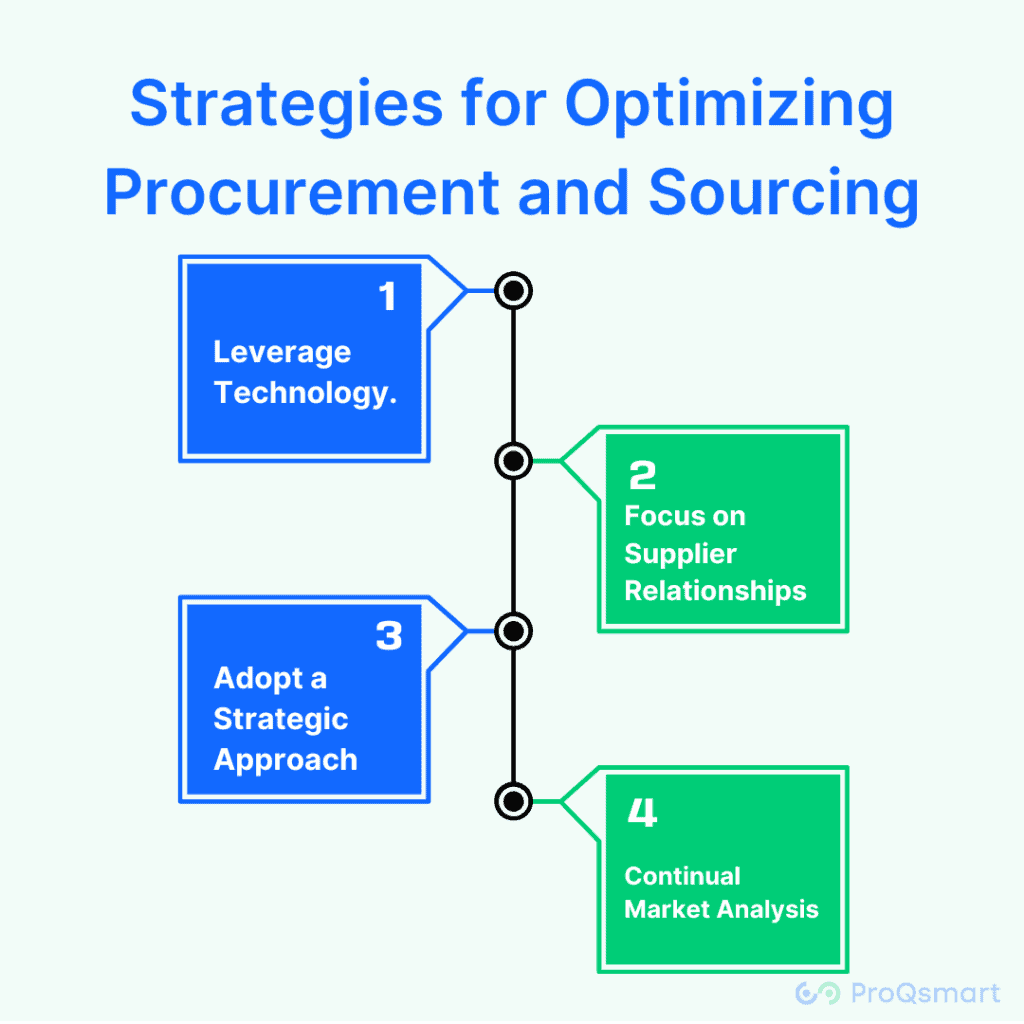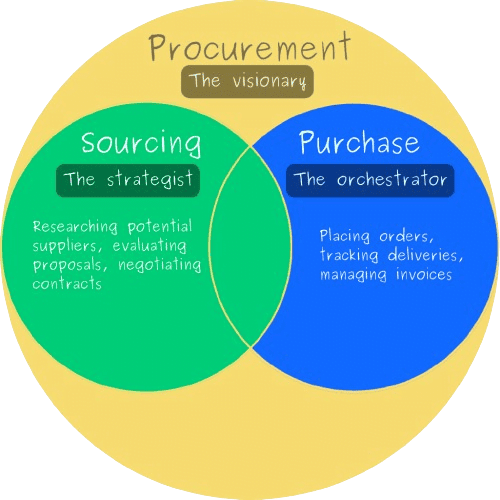Defining Procurement
Procurement refers to the overarching process of acquiring the goods and services a company needs to operate. It encompasses the entire cycle from identifying business needs to placing and receiving orders, processing payments, and managing supplier relationships. Procurement is a strategic function that involves negotiating contract terms, ensuring quality, managing costs, and maintaining a reliable supply chain to meet the business’s operational requirements.
Key Aspects of Procurement
- Order Processing: Executing purchase orders and managing transactions.
- Supplier Management: Building and maintaining relationships with suppliers to ensure reliable service and quality products.
- Payment and Invoicing: Handling financial transactions associated with purchasing activities.
- Contract Management: Overseeing contracts to ensure compliance and optimal terms.
Defining Sourcing
On the other hand, sourcing is a subset of the procurement process, focusing specifically on selecting and vetting suppliers who can provide the goods and services the company needs. It involves researching, identifying, evaluating, and engaging with potential suppliers to establish a base that can meet the quality, cost, and reliability standards required by the business.
Key Aspects of Sourcing
- Market Research: Investigating and analyzing market trends to identify potential suppliers.
- Supplier Evaluation: Assessing potential suppliers to ensure they meet the company’s standards for quality, cost, and reliability.
- Negotiation: Working with selected suppliers to agree on terms, prices, and delivery schedules.
- Supplier Onboarding: Integrating new suppliers into the company’s supply chain network.
Sourcing vs Procurement: The Key Differences
While sourcing is about finding the right suppliers, procurement encompasses the end-to-end process of acquiring goods and services from those suppliers. Sourcing is strategic and focuses on building a strong supplier base, whereas procurement is operational, emphasizing the efficient ordering and receipt of goods and services.
The Interplay between Procurement and Sourcing
In the U.S. market, the synergy between sourcing vs procurement is vital for business success. Effective sourcing establishes a foundation of reliable suppliers that meet cost and quality objectives, while proficient procurement ensures that the company can acquire these goods and services efficiently and effectively. Together, they form a comprehensive approach to strategic purchasing and supply chain management, driving cost savings, enhancing quality, and ensuring business continuity.
Strategies for Optimizing Procurement and Sourcing

- Leverage Technology: Implement procurement and sourcing software to streamline processes, enhance visibility, and improve decision-making.
- Focus on Supplier Relationships: Build strong partnerships with suppliers through regular communication, performance feedback, and collaborative problem-solving.
- Adopt a Strategic Approach: Align procurement and sourcing activities with the company’s broader business strategy, focusing on long-term value rather than short-term gains.
- Continual Market Analysis: Regularly assess market conditions and supplier performance to adapt sourcing strategies and ensure competitive advantage.
Conclusion
Understanding the distinct yet interconnected roles of procurement and sourcing is essential for businesses operating in the U.S. market. By effectively managing these processes, companies can optimize their supply chain operations, reduce costs, and achieve strategic purchasing goals, enhancing overall business efficiency and competitiveness.


